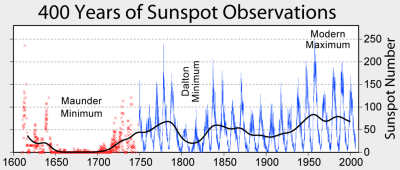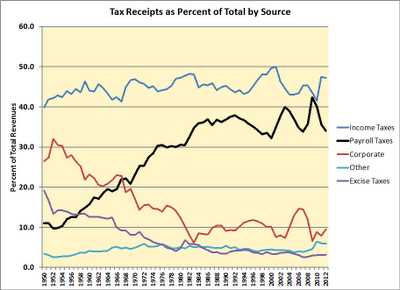When in some very distant future the sun goes into nova, it
will expand in size. Quite what will happen no one knows. One version of events
is that the sun’s expansion will “push” the inner planets “out.” Another is
that the sun will “engulf” all of the inner planets, out to the Earth’s orbit,
so that we will be inside the sun. We have about 5 billion years to make our
plans for escape.
All this, of course, is interesting, but what I would
underline here is that we already
have our being in the solar environment. As the third planet from the surface,
we are quite close to this blazing giant with a mass a million times that of
our little sphere of rock.
Back in 1963, at the time of President Kennedy’s
assassination—and we do remember, if we’re old enough, what we were doing then—I
was reading an article in a magazine suggesting that we were (believe it or
not) on the edge of a new period of major global cooling. Yes. And that, in
turn, got me interested in ice ages. And in turn then—in the solar cycle. It
seemed to me that if the earth either heats or cools, the sun must be causing that change.
The sun has cycles of activity, the recurring solar cycle.
It is measured by the appearance of sunspots. Their average number per month
has been charted carefully since 1749 and they form peaks (lots of spots) and
troughs (few or none). Each cycle is measured from trough to trough; cycles
average about 11 years. Astronomers began to number them in the eighteenth
century. The first sun cycle (SC 1) was the one extending from 1755 to 1766. We
are now in SC 24. It began on January 4, 2008, when astronomers noted the
appearance of a sunspot, high on the sun, with reversed polarity. Both are necessary to signal the change from cycle to cycle—appearance of a sunspot at high latitudes as well as magnetic reversal. Sunspots are
magnetic fields and, like all magnets, have a N-S polarity. The spots of a
cycle always have the same alignment. When a spot appears high on the sun with
reversed polarity, S-N, that signals the start of a new cycle.
SC 24 is now beginning to peak. Above I show an image
from NASA (
link) of SC 23 and SC 24, the latter as far as it has gone. In an article that
appeared in March 29 (
link), NASA predicted that SC 24 will be “weak,”
producing about 90 sunspots at its peak, the lowest observed since 1928. This
follows SC 23 which had an unusually enduring and inactive trough. What this
might mean is that the sun is going into a cooler period—and that, at least
based on common-sense logic, should also mean that the Earth will echo that
back. Is such speculation heterodox?
Well, let’s just see. Precise measurement of cycles began in 1749, but pretty good measurements go much farther back. And looking back, we see earlier periods of very low solar activity. The most pronounced of these was the Maunder Minimum, a seventy-year
period extending from 1645 to 1715. That period was experienced on Earth, and
has been referred to since, as the coldest period of the Little Ice Age, which began earlier. Another, later dip, which lasted 40 years, is known as the Dalton Minimum, 1790-1830. Significant global cooling took
place then as well. These two minima are named after astronomers, Edward
Maunder (1851-1928) and John Dalton (1766-1844). Measurement during the Maunder
Minimum, as shown below in little red crosses, was not quite as systematic as
it later became, but the extremely low activity of the sun
was noted by a handful of expert astronomers at the time, and the
Little Ice Age is well documented (see, for instance,
The Little Ice Age: How Climate Made History, 1300-1850, by Brian
M. Fagan). During the Dalton Minimum, lower-than-average temperatures were
noted, and one observatory in Germany, Oberlach Station, observed a 2° C drop in
temperature over a twenty-year period. Herewith a look at 400 years of sunspot
observations from Wikipedia (
link). The colored lines show the sun cycles; the black line is not identified in the source but may be carbon-14 measurements, an indirect indicator of sunspot activity. More on that on
Ghulf Genes (
link).
The modern scientific consensus rejects the idea that the
solar cycle has a direct effect on global temperature. Climate is a massively
complex phenomenon, not well understood even today. And the heat-production of
the sun at its minimum (in the troughs) is only about 0.1 percent lower then
its output at the maximum (in peaks). But then, of course, I wonder why we
speak of the Little Ice Age—which had drastic consequences at least as recorded
in Europe—and the cooling during the Dalton Minimum. Could the modern consensus
have something to do with excessive caution in a day and age when Global
Warming is a major socio-political issue? If the experienced global warming is
due to what, in the chart above, is labeled the Modern Maximum, i.e., of solar
activity, and may be followed by a lessening of solar heat production in due
time (a “weak” SC 24 followed by others), let us hope that that period won’t
last long either. Cooling periods are much worse for humanity than periodic
warmings.

















